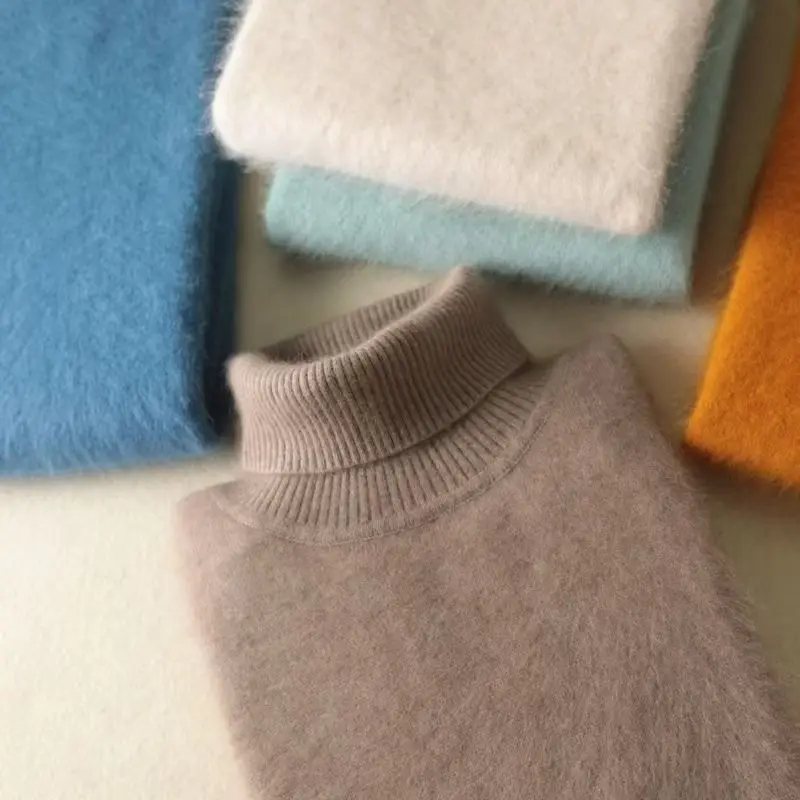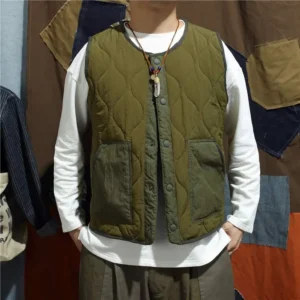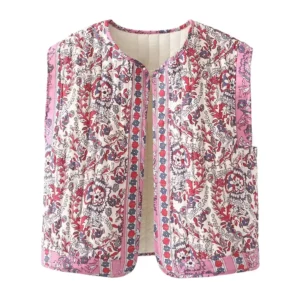Introduction to Cashmere: Nature’s Premier Luxury Fiber
Cashmere stands as one of the world’s most coveted natural fibers, harvested from the soft undercoat of certain mountain goat species primarily found across Asia’s high-altitude regions. This exceptional material isn’t just any wool—it’s defined by its extraordinary softness, remarkable insulating properties, and incredible lightness, making it roughly three times warmer than sheep’s wool while weighing significantly less. The distinctive combination of warmth without bulk explains why cashmere has maintained its status as a premier luxury material for centuries.
What truly sets cashmere apart is its rarity and the meticulous harvesting process. Each goat produces only 150-200 grams (5-7 ounces) of usable fiber annually, and the global production totals just 15,000-20,000 tons per year—a mere fraction compared to the millions of tons of sheep’s wool produced. This scarcity, combined with the labor-intensive collection process of combing or shearing during the spring molting season, contributes significantly to cashmere’s premium status and price points, which can range from $50 for basic items to several thousand dollars for high-end garments.
Perhaps most fascinating is how dramatically cashmere qualities vary based on geographic origin. The harsh climates of Mongolia produce fibers with different characteristics than those from Chinese Inner Mongolia or the Himalayan highlands. These styling tips for cashmere cardigans often take into account the unique properties of different regional sources. Throughout this guide, we’ll explore these regional differences in depth, examining how geography, climate, goat breeds, and traditional practices create distinct variations in quality, ethics, and sustainability across the world’s major cashmere-producing regions.
Whether you’re a cashmere enthusiast looking to make informed purchases or someone exploring our cashmere sweaters collection, understanding these regional differences will help you appreciate the complex factors that determine what makes exceptional cashmere truly exceptional.
Understanding Cashmere Quality Fundamentals
Fiber Diameter (Micron Count)
The most critical measure of cashmere quality is its fineness, measured in microns (one micron equals one-millionth of a meter). Premium cashmere typically measures under 16 microns in diameter, with the finest fibers reaching as low as 14 microns or even less. For context, human hair averages 70-100 microns. This extraordinary fineness creates the buttery-soft feel against skin that cashmere is famous for—the lower the micron count, the softer the fiber feels.
Fiber Length
While fineness determines softness, fiber length controls durability and resistance to pilling. Superior cashmere features fibers exceeding 36mm (1.4 inches) in length. Longer fibers can be twisted together more effectively during spinning, creating stronger yarns that resist pilling and maintain their appearance through years of wear. Short fibers, regardless of fineness, will eventually work their way out of the yarn, causing the dreaded pilling effect that diminishes appearance and longevity.
Crimp and Elasticity
High-quality cashmere displays significant natural crimp—tiny waves or bends along the fiber’s length. This crimping pattern creates natural elasticity, allowing garments to stretch slightly when worn and then return to their original shape. The crimp also traps more air between fibers, enhancing warmth without adding weight. Mountain goats from extreme climates typically develop more pronounced crimping patterns to increase their undercoat’s insulating properties.
Natural Color and Processing Impact
Raw cashmere occurs naturally in limited colors—predominantly white, but also various shades of brown, gray, and occasionally black. White cashmere is particularly prized as it can be dyed any color without pre-processing. Darker natural cashmere either remains undyed (creating beautiful earth tones) or undergoes bleaching before coloring, which can somewhat affect fiber quality. The responsible cashmere production methods employed during processing significantly influence how well the natural characteristics of the fiber are preserved.
Climate, Altitude, and Fiber Development
The harsh environmental conditions where cashmere goats thrive play a crucial role in fiber quality. Goats living at high altitudes with severe winter temperatures (often dropping to -40°F/-40°C) develop finer, denser undercoats for survival. This biological adaptation explains why regions with the harshest winters often produce the finest cashmere fibers. The dramatic temperature variations between seasons also contribute to the distinctive development cycle of the protective undercoat.
The Elite Source: Mongolian Cashmere
Mongolia’s vast, windswept grasslands and extreme continental climate create ideal conditions for producing some of the world’s finest cashmere. The country’s nomadic herders maintain approximately 27 million cashmere goats across its rugged terrain, where winter temperatures regularly plunge below -40°F (-40°C). These harsh conditions force the native goats to develop exceptionally fine, dense undercoats for survival—a natural adaptation that translates directly to superior fiber quality.
Mongolian cashmere typically measures 15-16 microns in diameter with lengths averaging 36-42mm (1.4-1.7 inches), placing it firmly in the premium category. The fibers display excellent crimp patterns and elasticity, contributing to their renowned softness, warmth, and durability. The unique combination of these characteristics makes Mongolian cashmere particularly well-suited for mens cashmere pullovers and other garments where both luxury feel and longevity are essential.
Mongolia produces approximately 6,700-7,000 tons of raw cashmere annually, representing roughly one-third of global production. However, this substantial output has created significant environmental challenges. Overgrazing has contributed to widespread desertification, with approximately 70% of Mongolia’s grasslands showing signs of degradation. In response, initiatives like the Sustainable Fibre Alliance (SFA) are working with herders to implement more sustainable grazing practices while maintaining the exceptional quality that makes Mongolian cashmere so desirable.
Traditional herding practices still dominate in Mongolia, with most goats being hand-combed rather than machine-sheared. This labor-intensive process, though slower, typically yields cleaner fibers with less damage, preserving the natural qualities that define premium cashmere. While Mongolia exports much of its raw cashmere for processing elsewhere, the country is gradually developing its manufacturing capabilities to capture more value from its prized natural resource.
China: The Production Powerhouse
China dominates the global cashmere market, producing approximately 70% of the world’s supply, with Inner Mongolia Autonomous Region serving as its primary production center. The country’s enormous output—estimated at 10,000-12,000 tons annually—positions it as both the largest producer of raw cashmere and the world’s foremost processor of cashmere from other regions, including Mongolia, Afghanistan, and Iran.
Chinese cashmere quality spans the entire spectrum from exceptional to basic. Premium cashmere from certain regions of Inner Mongolia rivals Mongolian fiber in quality, typically measuring 15-16 microns in diameter with lengths of 34-38mm (1.3-1.5 inches). However, China also produces substantial quantities of lower-grade cashmere with diameters exceeding 18-19 microns, which offers less softness but greater durability and more accessible price points.
What truly distinguishes China in the global cashmere industry is its unmatched processing infrastructure. The country has invested heavily in state-of-the-art dehairing, spinning, and manufacturing facilities, allowing it to process raw cashmere from around the world. This processing dominance explains why labels often indicate “Made in China” even when the raw materials originate elsewhere. Understanding the difference between fiber origin and manufacturing location helps explain why is cashmere expensive and how value builds throughout the supply chain.
Environmental concerns mirror those in Mongolia, with overgrazing and desertification affecting significant portions of Inner Mongolia. The Chinese government has implemented various programs to address these issues, including grazing restrictions and herd reduction initiatives. Additionally, larger Chinese manufacturers have begun adopting international certification standards like the Good Cashmere Standard (GCS) to improve both environmental sustainability and animal welfare practices throughout their supply chains.
Himalayan Pashmina: The Ultimate Luxury
In the remote high-altitude regions of the Himalayas—primarily Ladakh in India and parts of Nepal—herders maintain small flocks of Changra goats that produce an exceptionally fine fiber known as pashmina. True pashmina is not merely a marketing term but a distinct, ultra-premium type of cashmere that thrives in elevations above 14,000 feet (4,267 meters) where winter temperatures reach extreme lows and oxygen levels are reduced.
The unique environmental conditions of the Himalayas produce cashmere fibers of extraordinary fineness, typically measuring 12-16 microns—significantly finer than average cashmere. These fibers also tend to be longer (40-45mm/1.6-1.8 inches) and display excellent crimping patterns, contributing to their legendary softness and insulating properties. These qualities make Himalayan pashmina ideal for creating luxurious cashmere turtlenecks with unparalleled softness against the skin.
What truly distinguishes Himalayan pashmina is its artisanal production process. Unlike the industrialized collection methods used elsewhere, Himalayan goats are still hand-combed by skilled herders using traditional techniques passed down through generations. The fibers are often processed entirely by hand—from cleaning and dehairing to spinning and weaving—preserving ancient textile traditions and producing garments of exceptional quality and cultural significance.
Production volumes remain extremely limited, with the entire region producing only about 40-50 tons of fiber annually—less than 0.3% of global cashmere production. This extraordinary rarity, combined with the labor-intensive artisanal processing, places authentic Himalayan pashmina at the pinnacle of the cashmere market. Unfortunately, this premium status has led to widespread mislabeling, with many products marketed as “pashmina” actually containing little or no genuine Himalayan fiber.

Emerging Production: Afghanistan and Iran
Afghanistan has emerged as a significant player in the global cashmere market over the past decade, with annual production now reaching approximately 1,000 tons. The country’s cashmere traditionally remained largely unharvested, with goats raised primarily for meat rather than fiber. However, international development initiatives have helped Afghan herders recognize and capitalize on this valuable resource, dramatically increasing both quantity and quality of production.
Afghan cashmere typically measures 17-19 microns in diameter with moderate fiber lengths of 32-36mm (1.3-1.4 inches). While not as fine as Mongolian or Himalayan varieties, it offers good softness and excellent durability. The majority of Afghan cashmere comes from indigenous goat breeds in the northern provinces, particularly Herat, Balkh, and Kunduz, where semi-nomadic herding traditions have existed for centuries.
Iran has a long but understated history of cashmere production, currently producing approximately 500-700 tons annually. Iranian cashmere averages 16-18 microns in diameter with solid fiber lengths of 34-38mm (1.3-1.5 inches), placing it squarely in the premium category. The fibers often display distinctive characteristics that create fabrics with excellent drape and subtle luster, making them particularly suitable for elegant styling cashmere cardigan versatile looks.
Both regions face similar challenges in market development. Limited standardization, inconsistent quality control, and complex export routes have historically prevented these regions from capturing the full value of their cashmere resources. However, international partnerships and development programs have begun addressing these issues, gradually improving both quality consistency and market access. As processing infrastructure develops and quality standards stabilize, cashmere from these regions is increasingly recognized for its distinctive qualities and competitive value.
Other Notable Cashmere Sources
Pakistan produces approximately 200-300 tons of cashmere annually, primarily from the northern regions bordering China and Afghanistan. Pakistani cashmere averages 16-18 microns in fineness with moderate fiber lengths. The country has been steadily improving its processing capabilities, particularly around Lahore, allowing more value-added production rather than simply exporting raw materials. Pakistani cashmere often features distinctive natural coloration in warm brown and gray tones.
Kazakhstan maintains modest but growing cashmere production centered in its mountainous eastern regions. Kazakh cashmere typically measures 16-19 microns with good fiber length, placing it in the mid-premium range. The country benefits from having preserved many traditional herding practices while gradually modernizing its collection and initial processing methods. Production volumes remain relatively small at approximately 100-150 tons annually, but quality has been improving consistently.
Turkey has historically produced limited quantities of cashmere, primarily from the eastern Anatolian regions where goats have adapted to harsh mountain conditions. Turkish cashmere production remains small—approximately 50-80 tons annually—but the country’s established textile industry provides significant processing capabilities. Turkish manufacturers often blend domestic cashmere with imported fiber to create distinctive products that balance quality and affordability in their cashmere vests and other garments.
These secondary sources collectively contribute about 5-7% of global cashmere production. While individually small, they provide important market diversity and often offer unique characteristics based on local goat breeds, climatic conditions, and traditional processing methods. As consumer interest in provenance and production stories grows, these regions have opportunities to develop distinct identities in the premium cashmere market.
Regional Comparison: Quality Metrics at a Glance
Understanding how cashmere qualities vary across different sourcing regions helps both businesses and consumers make informed decisions. The table below provides a comprehensive comparison of key metrics across major producing regions:
| Region | Fiber Fineness (Microns) | Fiber Length | Natural Colors | Softness | Durability | Production Volume | Key Ethical Concerns | Sustainability Initiatives |
|---|---|---|---|---|---|---|---|---|
| Mongolia | 15-16 microns | 36-42mm (1.4-1.7in) | White, brown, grey | Very high | Excellent | High | Overgrazing | SFA, GCS programs |
| China | 15-19 microns | 34-38mm (1.3-1.5in) | White, grey | High | Good | Very high | Environmental impact | Various standards |
| Himalayan | 12-16 microns | 40-45mm (1.6-1.8in) | White, grey | Exceptional | Very good | Very low | Economic sustainability | Traditional certifications |
| Afghanistan | 17-19 microns | 32-36mm (1.3-1.4in) | Mixed | Moderate | Good | Low-Medium | Quality consistency | Developing |
| Iran | 16-18 microns | 34-38mm (1.3-1.5in) | Mixed | High | Good | Low | Standardization | Limited |
While this comparison provides a useful overview, it’s important to understand that significant variation exists within each region. Factors such as specific altitude, local climate, goat breed, and individual herding practices all influence fiber characteristics. For example, premium Inner Mongolian cashmere can match or exceed average Mongolian cashmere in quality, while lower-grade Mongolian fiber may be outperformed by premium Afghan cashmere.
Additionally, processing plays a crucial role in determining final product quality. The finest raw fiber can be compromised by poor processing, while expert manufacturing can maximize the potential of even moderate-quality raw material. This explains why the world’s finest cashmere garments often combine exceptional raw materials from regions like Mongolia or the Himalayas with sophisticated processing in places with advanced textile traditions like Italy or Scotland.
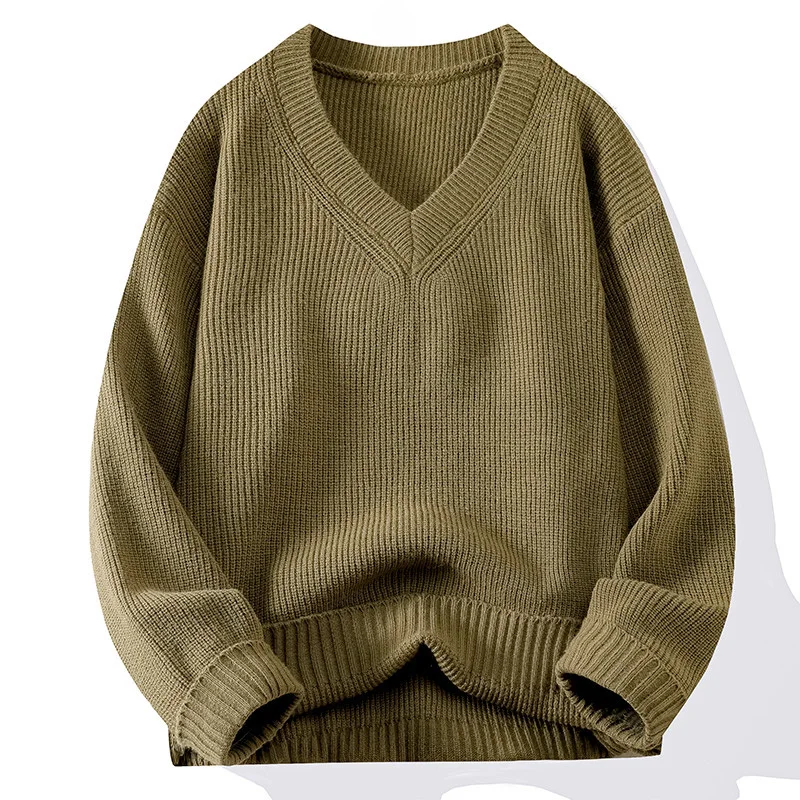
From Source to Grade: How Origin Affects Quality Classification
Cashmere is typically classified into grades that reflect its quality characteristics, with Grade A representing the finest fibers (typically under 16 microns), Grade B covering mid-range quality (16-19 microns), and Grade C encompassing the coarsest acceptable fibers (19-21 microns). However, these classifications can be somewhat misleading without considering regional origin and other quality factors beyond just diameter.
For example, Grade A cashmere from Mongolia typically features not only fine diameter but also superior length (over 38mm/1.5 inches) and excellent crimp. In contrast, Grade A cashmere from some Chinese regions might meet the diameter requirement but have shorter average fiber length. Both qualify as “Grade A” based on fineness alone, but the Mongolian fiber will generally produce more durable, pill-resistant garments due to its length advantage.
The relationship between fiber attributes and finished product quality becomes particularly evident in specialized products like brushed cashmere sweaters. The brushing process, which creates a soft, fuzzy surface texture, performs differently depending on the underlying fiber characteristics. Longer fibers withstand brushing while maintaining structural integrity, while shorter fibers may shed excessively or develop pills more quickly.
Processing expertise can sometimes compensate for moderate differences in raw material quality. Advanced dehairing technology can more effectively remove guard hairs and impurities, while sophisticated spinning techniques can maximize the performance of varying fiber lengths. This explains why some regions with moderate-quality raw fiber but excellent manufacturing capability can produce outstanding finished products.
When evaluating cashmere quality, consumers should look beyond simple grade classifications and consider the combination of origin, processing expertise, and specific fiber characteristics that contribute to the ultimate performance and longevity of the finished garment.
Ethical and Sustainable Practices Across Regions
The ethical and sustainability challenges facing cashmere production vary significantly by region, with overgrazing representing the most widespread environmental concern. In Mongolia and Inner Mongolia, rapid expansion of goat herds—driven by rising cashmere demand—has contributed to severe grassland degradation. Approximately 70% of Mongolia’s grasslands show signs of desertification, threatening both the ecosystem and the long-term viability of herding itself.
Animal welfare practices also differ substantially across regions. In Mongolia and the Himalayas, traditional hand-combing remains common—a labor-intensive but generally humane process that collects fiber during the natural spring molting period. In contrast, some large-scale operations in China rely on shearing, which is faster but potentially stressful for the animals, especially when performed before natural molting begins. The timing of fiber collection significantly impacts both animal welfare and fiber quality.
Economic sustainability presents another dimension of ethical production. In the Himalayan regions, extremely small-scale herders face challenges maintaining traditional practices while earning living wages. Many 15 stylish ways to wear cashmere cardigans incorporate these artisanal fibers, supporting these traditional communities. In contrast, Mongolian herders manage larger flocks but face market volatility and limited bargaining power within the global supply chain.
Several promising initiatives are addressing these challenges. The Sustainable Fibre Alliance (SFA) works with Mongolian herders to implement responsible grazing practices while ensuring fair compensation. The Good Cashmere Standard (GCS) focuses on both environmental stewardship and animal welfare across multiple producing regions. Various traceability programs use technologies from blockchain to DNA testing to verify claims about geographic origin and production methods.
Consumer awareness increasingly drives improvement, with brands responding to demand for transparent, ethical production. Estate Cloth and other premium cashmere companies are leading this shift by providing detailed information about sourcing regions and production practices, recognizing that sustainability and ethics have become inseparable from quality in defining truly exceptional cashmere.
The Global Journey: From Goat to Garment
The transformation of cashmere from goat to garment involves a complex, multi-stage process that often spans continents. Understanding this journey reveals why origin matters throughout the entire supply chain.
The process begins with harvesting, either through combing or shearing during the spring molting season. Herders typically perform initial sorting, removing obvious impurities before selling the raw fiber to collectors or processors. This first stage varies dramatically by region—from individual Himalayan herders with just a few goats to Mongolian nomadic families managing hundreds or Chinese operations with thousands.
Dehairing represents the most technical and crucial processing stage. This complex mechanical process separates the fine undercoat fibers from coarser guard hairs and impurities. Historically concentrated in China, Italy, and Scotland, dehairing technology has gradually spread to producing countries like Mongolia. The quality of this process significantly impacts the final product, as insufficient dehairing leaves scratchy guard hairs, while overly aggressive processing can damage the delicate fibers.
Spinning transforms clean cashmere fibers into yarn, with different techniques producing varied results. Traditional hand-spinning in the Himalayan region creates yarns with distinctive character but limited consistency. Modern spinning mills in China, Italy, and other manufacturing centers produce more consistent yarns in various weights and plies. The spinning process must balance many factors including twist level, yarn count, and tension control, all of which affect the final garment’s performance.
Knitting or weaving transforms yarn into fabric, with different techniques suited to different regional cashmere characteristics. Longer Mongolian fibers excel in finely knitted structures, while the exceptional softness of Himalayan fibers works beautifully in lightweight woven fabrics. Finishing processes—washing, pressing, and sometimes brushing or other treatments—bring out the cashmere’s natural qualities and enhance performance characteristics.
When considering are cashmere cardigans worth investment, understanding this complex journey helps explain why truly exceptional cashmere commands premium prices—it represents not just fine raw materials but expertise applied at every stage from goat to garment.
Cashmere Wrap Sweaters, Women's Cashmere Pullovers
$75.89 Select options This product has multiple variants. The options may be chosen on the product pageCashmere Cable Knit Sweaters, Women's Cashmere Pullovers
Price range: $111.82 through $112.93 Select options This product has multiple variants. The options may be chosen on the product page- Price range: $171.47 through $181.33 Select options This product has multiple variants. The options may be chosen on the product page
Cropped Cashmere Sweaters, Women's Cashmere Pullovers
$155.77 Select options This product has multiple variants. The options may be chosen on the product page- Price range: $87.29 through $91.47 Select options This product has multiple variants. The options may be chosen on the product page
Oversized Cashmere Sweaters, Plus Size Cashmere Sweaters, Women's V-Neck Cashmere Sweaters
$136.87 Select options This product has multiple variants. The options may be chosen on the product page
Market Realities: How Origin Affects Price and Availability
The global cashmere market displays significant price differentials based on origin, with these variations reflecting both quality differences and market dynamics. Himalayan pashmina commands the highest prices—often 30-50% more than equivalent-grade Mongolian cashmere—due to its exceptional fineness and extreme rarity. Mongolian cashmere typically sells at a 10-20% premium over Chinese fiber of similar specifications, reflecting both perceived quality advantages and the country’s strong reputation.
Supply reliability varies dramatically by region, influencing business sourcing strategies. China offers the most consistent supply volumes and typically the shortest lead times, making it attractive for larger-scale production. Mongolian production, while substantial, faces more significant seasonal fluctuations and occasional export restrictions. Himalayan pashmina remains perpetually scarce, with demand consistently exceeding the limited supply capacity of the region’s small-scale producers.
Market volatility affects different regions to varying degrees. Mongolia’s heavy economic dependence on cashmere makes its market particularly sensitive to price fluctuations. When global cashmere prices dropped significantly a few years ago, many Mongolian herders faced severe economic hardship. In contrast, Chinese producers generally have more diversified economic activities, providing some buffer against market downturns.
Consumer preferences have begun shifting toward known provenance and ethical production, gradually transforming market dynamics. Premium brands increasingly feature specific regional origins in their marketing, recognizing that consumers value the stories and traditions behind their cashmere products. This trend benefits regions with strong identities and verifiable production practices, particularly Mongolia and the Himalayan regions.
Looking forward, climate change poses significant challenges for all cashmere-producing regions. Rising temperatures and changing precipitation patterns threaten the delicate ecosystems where cashmere goats thrive. Regions with more sustainable herding practices and greater climate resilience may gain competitive advantages as these challenges intensify.
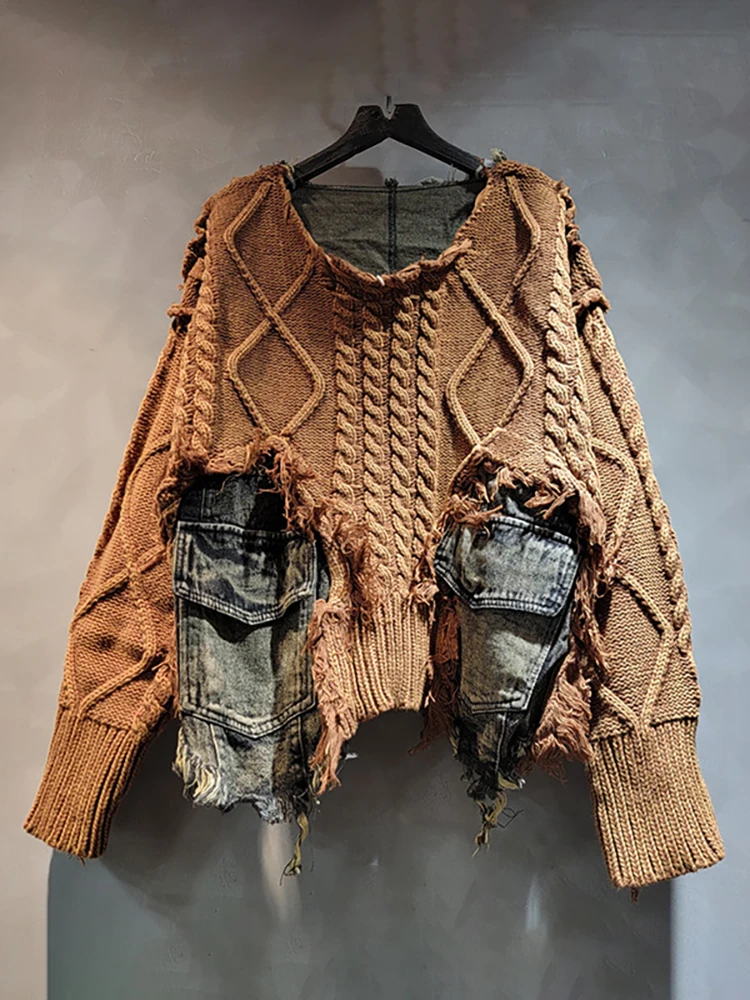
Strategic Sourcing: Guidance for Businesses
For businesses developing cashmere product lines, strategic sourcing begins with aligning regional characteristics to specific product requirements. Mongolian cashmere’s combination of fineness and length makes it ideal for durable everyday luxury items where both softness and longevity matter. Himalayan pashmina’s exceptional fineness suits ultra-luxury products where extraordinary softness justifies premium pricing. Chinese cashmere’s broader quality spectrum offers options across various price points.
Due diligence in verifying regional claims has become increasingly important as consumers grow more knowledgeable. Beyond simple country-of-origin documentation, leading brands now implement testing programs that verify fiber characteristics consistent with claimed origins. Advanced technologies like stable isotope analysis can actually confirm geographic origin by analyzing trace elements that vary by region due to differences in soil and water.
Building effective supplier relationships requires understanding regional business cultures. Mongolian suppliers typically value long-term relationships and may prioritize trusted partners during supply shortages. Chinese suppliers often offer greater flexibility in minimum order quantities and customization options. Himalayan producers generally require more lead time but deliver truly distinctive products worth the additional planning.
Quality control considerations vary by region. For Mongolian cashmere, fiber length consistency deserves particular attention, as this can vary significantly between suppliers. With Chinese cashmere, thorough testing for accurate fiber diameter claims is essential. For all regions, guard hair content should be carefully monitored, as insufficient dehairing leads to scratchy garments regardless of the fiber’s origin or fineness.
The most successful cashmere businesses typically develop multi-region sourcing strategies that balance quality, ethics, cost, and reliability. By understanding each region’s distinctive strengths and challenges, brands can create product lines that leverage the best each region offers while managing supply risks through strategic diversification.
Consumer Guide: Identifying Quality Cashmere by Region
For consumers seeking high-quality cashmere, understanding regional indicators can help inform better purchasing decisions. Look for specific regional claims on product labels or descriptions—premium brands increasingly specify Mongolian, Inner Mongolian, or Himalayan origin for their high-end products. Vague terms like “pure cashmere” without origin information often indicate blended sources of varying quality.
To assess quality regardless of origin, perform a simple touch test—high-quality cashmere feels immediately soft without any scratchiness. Then try the wrinkle test: squeeze the fabric gently, then release. Superior cashmere should return to its original shape quickly due to the natural elasticity of fine, long fibers. Finally, check for excessive initial shedding, which often indicates shorter fibers that will continue to work loose over time.
Price expectations should align with regional quality hierarchies. True Himalayan pashmina legitimately commands the highest prices, starting at several hundred dollars even for simple accessories. Premium Mongolian cashmere products typically occupy the upper-middle luxury market. When shopping for womens cashmere turtlenecks or similar items, extraordinarily low prices should raise questions about either fiber quality or ethical production practices.
Proper care techniques help maximize the longevity of cashmere from any region. Hand washing with gentle detergent preserves fiber quality better than dry cleaning. When storing cashmere between seasons, clean it first to remove any food particles or skin oils that might attract moths, then store in breathable cotton bags rather than plastic. Finally, address any pilling promptly with a cashmere comb rather than pulling, which can damage the fabric structure.
When making purchasing decisions, consider both immediate quality and long-term value. Higher-quality cashmere from premium regions may cost more initially but will typically maintain its appearance and softness through many more wearings and washings, making it more economical over its longer useful lifespan.
Is Cashmere from Mongolia Better Than Chinese Cashmere?
The question of whether Mongolian cashmere is superior to Chinese cashmere requires a nuanced answer that avoids oversimplification. At the highest quality tiers, premium Mongolian and Inner Mongolian Chinese cashmere can be virtually indistinguishable in terms of fiber fineness, length, and overall performance. Both regions produce exceptional fiber when optimal conditions and proper herding practices are maintained.
Where meaningful differences emerge is in averages and consistency. Mongolian cashmere averages finer diameter and longer fiber length across its total production compared to the Chinese average. Mongolia’s focus on quality over quantity, combined with its particularly harsh climate, contributes to this statistical advantage. However, China’s enormous production includes both premium segments that rival Mongolia’s best and lower-grade segments that bring down the overall average.
Processing capabilities also influence the final product quality. China’s more developed processing infrastructure can sometimes yield superior finished products even from moderate-quality raw materials. Conversely, excellent Mongolian raw fiber might not reach its full potential if processed with less sophisticated technology. This explains why many luxury brands source Mongolian fiber but have it processed in China or Europe.
Environmental factors increasingly affect this comparison. Mongolia maintains more traditional herding practices with generally smaller flocks and greater mobility, potentially reducing environmental impact. However, both countries face serious challenges with overgrazing and desertification, making individual supplier practices more relevant than national generalizations.
For consumers, the most practical approach is focusing on specific quality indicators rather than simply favoring one country over another. A well-made garment using premium Chinese cashmere will outperform a poorly made product using average Mongolian fiber. The origin matters, but it represents just one factor among many that determine the ultimate quality of cashmere products.
What Makes Himalayan Pashmina Different from Regular Cashmere?
True Himalayan pashmina represents a specialized subset of cashmere with distinctive characteristics stemming from unique geographic conditions. While all cashmere comes from the undercoat of certain goat breeds, pashmina specifically refers to fiber harvested from Changra goats living at extreme altitudes (above 14,000 feet/4,267 meters) in the Himalayan regions of India, Nepal, and sometimes Pakistan.
The most significant technical difference lies in fiber diameter. Authentic pashmina typically measures 12-16 microns, with the finest reaching 12-14 microns—extraordinarily fine even compared to premium cashmere from other regions (which usually measures 15-16 microns). This exceptional fineness creates an almost ethereal softness that distinguishes true pashmina immediately upon touch.
Traditional harvesting and processing methods further differentiate pashmina. The fibers are still primarily collected through hand-combing rather than shearing, and many producers maintain centuries-old hand-processing techniques. Each step—from sorting to dehairing to spinning—relies on skilled artisans rather than industrial machinery. These traditional methods preserve fiber integrity but significantly limit production volume, contributing to pashmina’s exceptional rarity.
Authentication presents a major challenge for consumers, as the term “pashmina” has been widely misappropriated in marketing. Many products labeled as pashmina contain either no cashmere at all or regular cashmere from other regions. Genuine Himalayan pashmina will always specify its precise origin (typically Ladakh, Kashmir, or Nepal) and usually carries certification from regional authorities or specialized testing verification.
For consumers, the distinction becomes relevant primarily at the luxury extreme of the market. True pashmina justifies its significant price premium through extraordinary softness, lightness, and the preservation of cultural heritage. However, premium cashmere from Mongolia or Inner Mongolia offers exceptional quality at somewhat more accessible price points, making it the practical choice for most luxury cashmere consumers.
Are Ethical and Sustainable Practices Improving Across Cashmere Regions?
Ethical and sustainable practices in cashmere production show promising improvement across regions, though progress remains uneven and challenges substantial. Mongolia has made significant strides through programs like the Sustainable Fibre Alliance (SFA), which has enrolled thousands of herders in sustainable grazing certification programs. These initiatives focus on maintaining appropriate herd sizes and implementing rotational grazing to allow grassland recovery, addressing the critical issue of overgrazing.
China has taken a more regulatory approach, implementing grazing restrictions and herd reduction policies in severely affected areas of Inner Mongolia. Large Chinese manufacturers have increasingly adopted international certification standards, partly in response to Western brand requirements and partly due to domestic environmental concerns. While enforcement remains inconsistent, the general trajectory shows increasing emphasis on sustainability.
Animal welfare practices have seen more limited improvement but growing attention. Traditional hand-combing, still common in Mongolia and the Himalayan regions, generally aligns well with animal welfare concerns. The more industrial operations in parts of China have faced greater scrutiny, leading some larger producers to adopt certification programs that include animal welfare standards covering both fiber collection methods and general care practices.
Consumer awareness has become a powerful driver for improvement, with premium brands responding to demand for transparent, ethical production. Many brands now provide detailed information about sourcing regions and production practices, recognizing that sustainability and ethics have become important quality indicators for informed consumers.
Despite these positive developments, significant challenges remain. Climate change threatens all cashmere-producing regions with rising temperatures and changing precipitation patterns. Economic pressures still incentivize quantity over quality in many areas. Limited regulatory oversight, particularly in remote regions, allows some producers to continue unsustainable practices despite industry progress.
The most promising development may be the growing recognition that environmental sustainability, animal welfare, and fiber quality are fundamentally interconnected. Healthier goats living on properly managed grasslands naturally produce better fiber, creating alignment between ethical practices and quality outcomes that benefits producers, consumers, and ecosystems alike.
Frequently Asked Questions About Cashmere Sourcing
Which country truly produces the best cashmere?
Rather than one country producing the “best” cashmere, each major region offers distinctive qualities. The Himalayan region produces the finest fibers, Mongolia offers an excellent balance of fineness and length, and China produces the greatest volume across all quality levels. The “best” depends on specific priorities—ultimate softness, durability, value, or consistent availability.
How can I verify a garment’s country of origin?
Look for specific origin claims beyond just “100% cashmere”—premium brands typically specify Mongolian, Inner Mongolian, or Himalayan origin for their top products. Certificate programs like SFA (Mongolia) or Chyangra Pashmina (Nepal) provide additional verification. For absolute certainty, some luxury brands offer technical verification through fiber testing that confirms characteristics consistent with claimed origins.
Why is there such price variation for cashmere?
Price variations reflect differences in fiber quality (diameter and length), harvesting methods (hand-combing vs. machine shearing), processing quality, manufacturing location, and brand positioning. A sweater made from premium Mongolian cashmere, processed in Italy, and sold by a luxury brand naturally costs more than one using lower-grade fiber processed and manufactured entirely in China and sold by a mass-market retailer.
How is climate change affecting cashmere quality by region?
Climate change poses significant threats to cashmere quality across all producing regions. Warming temperatures may reduce the need for goats to develop the thick, fine undercoats that produce premium cashmere. Changing precipitation patterns threaten the delicate grassland ecosystems where cashmere goats thrive. Regions maintaining more sustainable herding practices may prove more resilient to these changes, potentially shifting quality advantages in the future.
Can machine-washable cashmere be high quality?
Yes, high-quality cashmere can be made machine-washable through special treatments that modify the fiber’s surface to prevent felting without significantly affecting softness or other properties. These treatments add cost but provide practical benefits for everyday luxury items. The best machine-washable cashmere starts with premium fiber, then applies minimal treatment to maintain the natural characteristics that make cashmere exceptional in the first place.

